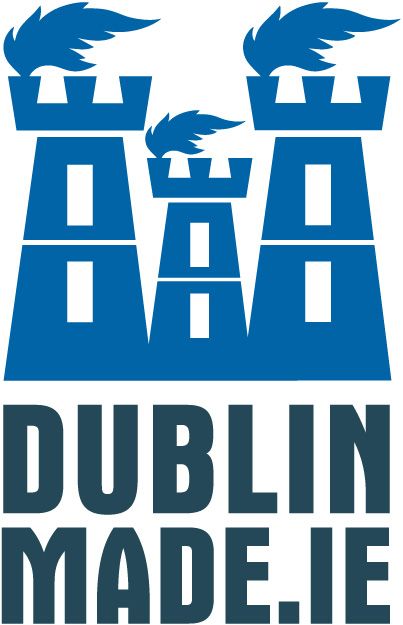
Ireland From The Air – Aerial Photographer ‘Monkey’ Morgan | Season 4 – Episode 8
Wings Feb 13, 2024
In the 1970s and ’80s, during the childhood of this author, my parents frequently took me to visit relatives in the Irish countryside. I was always captivated by the aerial photograph of the house, proudly hung in everyone’s hallway. In those days it was a novelty to be able to see your house from the air!
These days having free access to an aerial photograph of almost anywhere on the planet has become commonplace. The idea of aerial photography dates back to 1907 when Julius Neubronner, a German apothecary and inventor, began to use his pigeons, typically employed for delivering medications to patients, to capture images from the air. Neubronner devised a small harness and affixed a miniature 70mm camera to a pigeon, equipped with a timer. Subsequently, the German army expanded upon his concept by establishing the Bavarian Pigeon Corps.
Alexander Campbell Morgan (1919 – 1958), a London native, is widely recognised for popularising aerial photography in Ireland. Known by his schoolboy nickname “Monkey” due to his consistently dishevelled appearance.
In World War 2 Morgan enlisted with the army and joined the Royal Artillery Air Corps. He began his training as an observation officer and within his first month of flying in his Taylorcraft Auster reconnaissance aircraft he had accumulated 150 hours of flight time and completed 500 landings.
After seeing action in Italy in 1944 flying his unarmed Auster reconnaissance aircraft, he was honoured with a D.F.C. (Distinguished Flying Cross). Notably, the D.F.C. was typically bestowed upon RAF officers and Morgan was among the first army pilots to receive this medal.
After the war, “Monkey” Morgan experienced better fortune than many of his wartime comrades and was able to bring his passion for flying and transition into peacetime flying. He joined Bruce Martin’s Manchester based company, Airviews and began flying as an aerial photographic pilot. Seeing an opening in the Irish market for charter work and aerial photography he moved to Dublin in 1953 with his Auster three-seater cabin monoplane, registered EI-AGJ and established Aerophotos Limited. He became a member of the Aero Club of Ireland and flew out of Weston Airport, Dublin.
Beyond supplying aerial photographs of Ireland’s villages, towns, airports and a myriad of other subjects, he quickly became sought after for his services by the Irish and British newspapers. He frequently flew to cover specific stories, landing his Auster airplane nearby, capturing photographs and promptly returning to Dublin or Britain with the latest photo scoop.
One such ‘scoop’ was in August 1954 when Monkey Morgan landed his Auster three-seater cabin monoplane on the beach at Rosapenna, Co. Donegal alongside a 1947 de Havilland “Dove” (G-AJLW), used for hour-long sightseeing trips of the area by a Captain Morgan who would fly hotel guests around Mulroy Bay. Monkey snapped his photograph and promptly took off again bringing the story back to the Dublin newspapers.
Towards the mid-1950’s Monkey Morgan expanded on his aerial photography and press work and became Chief Pilot for Republic Charter Airlines based in Cork.
By September 1955 Monkey had opened up a new aviation revenue stream when he participated in the filming of “The Spirit of St Louis”. The movie portrayed Lindbergh’s historic transatlantic flight from west to east and was filmed over Portmagee, County Kerry.
In 1957 he founded Irish Air Charter Ltd based in Limerick and took on the roles of Chief Pilot and Technical Manager. To establish his place in the Irish charter marketplace and attract new business he purchased a Piper Apache (EI-AJL) in America. The only issue was that the plane had to be flown from America to Ireland.
In early February 1957, Monkey and seasoned American co-pilot Max Conrad, who himself boasted over 50,000 flight hours, departed from Gander Airport, Canada. Morgan and Conrad’s 2,100-mile flight, lasted thirteen hours and marked the flight of the first Irish-registered light aircraft directly to Dublin.
Just a year later, on January 15th 1958, Monkey tragically crashed and was killed while flying in this same aircraft. He had been tasked by the Daily Express to capture photographs of the Carmody Hotel disaster in Ennis, County Clare. During an auction in a room on the hotel’s second storey, the floor collapsed, resulting in eight deaths and numerous injuries.
After taking off from Shannon Airport to fly the photo slides to Manchester, his plane crashed into the Shannon Estuary, off Waller’s Island. There was speculation that an improperly closed cockpit door might have been a factor.
Following Monkey Morgan’s death, Independent Newspapers acquired and later donated his negatives to the National Library of Ireland. Remaining untouched in a box for years, they were rediscovered and featured in the book “Ireland from the Air – Independent Archives 1951-1958,” curated by Michael Hinch.
After previewing this upcoming story on the Ireland Made social media, we were contacted by the team at Shannon Aviation Museum, who as children fondly remembered Monkey Morgan being a part of the crew at Weston Airport when their Dad was instructing there.
Alexander Campbell “Monkey” Morgan (1919 – 1958) is buried in St Brigid’s graveyard, Stillorgan, Dublin.
Information sources and photo credits:
Documenting Rosslare Harbour – Brian Boyce
Explorers Web – Aerial Photography
Flickr
GH Graham
Ireland from the Air – Independent Archives 1951-1958
Irish Independent
Michael Kelly
P Prune – Aviation History
Wings On Film
You Who
ABPIC – George Trussell Collection

